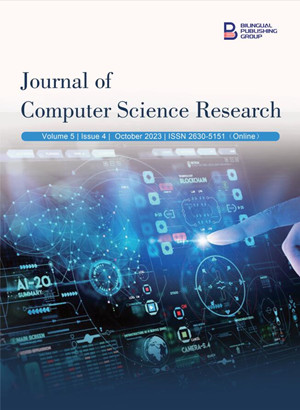
A Natural Language Generation Algorithm for Greek by Using Hole Semantics and a Systemic Grammatical Formalism
DOI:
https://doi.org/10.30564/jcsr.v5i4.6067Abstract
This work is about the progress of previous related work based on an experiment to improve the intelligence of robotic systems, with the aim of achieving more linguistic communication capabilities between humans and robots. In this paper, the authors attempt an algorithmic approach to natural language generation through hole semantics and by applying the OMAS-III computational model as a grammatical formalism. In the original work, a technical language is used, while in the later works, this has been replaced by a limited Greek natural language dictionary. This particular effort was made to give the evolving system the ability to ask questions as well as the authors developed an initial dialogue system using these techniques. The results show that the use of these techniques the authors apply can give us a more sophisticated dialogue system in the future.
Keywords:
Natural language processing; Natural language generation; Natural language understanding; Dialog system; Systemic grammar formalism; OMAS-III; HRI; Virtual assistant; Hole semanticsReferences
[1] Giachos, I., Piromalis, D., Papoutsidakis, M., et al., 2020. A contemporary survey on intelligent human-robot interfaces focused on natural language processing. International Journal of Research in Computer Applications and Robotics. 8(7), 1-20.
[2] Tellex, S., Gopalan, N., Kress-Gazit, H., et al., 2020. Robots that use language. Annual Review of Control, Robotics, and Autonomous Systems. 3, 25-55. DOI: https://doi.org/10.1146/annurev-control-101119-071628
[3] Giachos, I., Papakitsos, E.C., Savvidis, P., et al., 2023. Inquiring natural language processing capabilities on robotic systems through virtual assistants: A systemic approach. Journal of Computer Science Research. 5(2), 28-36. DOI: https://doi.org/10.30564/jcsr.v5i2.5537
[4] Lidz, J., 2023. Parser-grammar transparency and the development of syntactic dependencies. Language Acquisition. 30(3-4), 311-322. DOI: https://doi.org/10.1080/10489223.2022.2147840
[5] Koller, A., Niehren, J., Thater, S. (editors), 2003. Bridging the gap between underspecification formalisms: Hole semantics as dominance constraints. Proceedings of the Tenth Conference on European Chapter of the Association for Computational Linguistics; 2003 Apr 12-17; Budapest Hungary. Stroudsburg: Association for Computational Linguistics. p. 195-202. DOI: https://doi.org/10.3115/1067807.1067834
[6] Papakitsos, E., 2013. The systemic modeling via military practice at the service of any operational planning. International Journal of Academic Research in Business and Social Sciences. 3(9), 176.
[7] Giachos, I., 2015. Υλοποίηση της ΟΜΑΣ-ΙΙΙ ως Γραμματικού Φορμαλισμού για Ρομποτικές εφαρμογές (in Greek) [Implementation of OMAS-III as a grammar formalism for robotic applications] [Master's thesis]. Athens: National & Kapodistrian University of Athens and National Technical University of Athens.
[8] Giachos, I., Papakitsos, E.C., Chorozoglou, G., 2017. Exploring natural language understanding in robotic interfaces. International Journal of Advances in Intelligent Informatics. 3(1), 10-19.
[9] Bos, J., 1996. Predicate Logic Unplugged [Internet]. Available from: https://publikationen.sulb.uni-saarland.de/bitstream/20.500.11880/25244/1/report_103_96.pdf
[10] Bos, J., 2002. Underspecification and resolution in discourse semantics [Ph.D. thesis]. Saarbrücken: Saarland University.
[11] Jumanto, J., Rizal, S.S., Asmarani, R., et al. (editors), 2022. The discrepancies of online translation-machine performances: A mini-test on object language and metalanguage. 2022 International Seminar on Application for Technology of Information and Communication (iSemantic); 2022 Sep 17-18; Semarang, Indonesia. New York: IEEE. p. 27-35. DOI: https://doi.org/10.1109/iSemantic55962.2022.9920394
[12] Georgi, G., 2020. Demonstratives in first-order logic. The architecture of context and context-sensitivity. Springer: Cham. pp. 125-148. DOI: https://doi.org/10.1007/978-3-030-34485-6_8
[13] Michalczenia, P., 2022. First-order modal semantics and existence predicate. Bulletin of the Section of Logic. 51(3), 317-327.
[14] Bos, J., 2021. Variable-free Discourse Representation Structures [Internet]. Available from: https://semanticsarchive.net/Archive/jQzMzJlY/compact.pdf
[15] Ross, D.T., 1977. Structured analysis (SA): A language for communicating ideas. IEEE Transactions on Software Engineering. (1), 16-34. DOI: https://doi.org/10.1109/TSE.1977.229900
[16] Grover, V., Kettinger, W.J., 2000. Process think: Winning perspectives for business change in the information age. IGI Global: Hershey.
[17] Pereira, J., Franco, N., Fidalgo, R., 2020. A semantic grammar for augmentative and alternative communication systems. The 23rd International Conference on Text, Speech, and Dialogue. Springer: Cham. pp. 257-264. DOI: https://doi.org/10.1007/978-3-030-58323-1_28
[18] Bîlbîie, G., 2020. A constraint-based approach to linguistic interfaces. Lingvisticæ Investigationes. 43(1), 1-22. DOI: https://doi.org/10.1075/li.00038.bil
[19] Chen, W., Chen, J., Su, Y., et al., 2020. Logical natural language generation from open-domain tables. arXiv preprint arXiv:2004.10404. DOI: https://doi.org/10.48550/arXiv.2004.10404
[20] Giachos, I., Papakitsos, E.C., Antonopoulos, I., et al. (editors), 2023. Systemic and hole semantics in human-machine language interfaces. 2023 17th International Conference on Engineering of Modern Electric Systems (EMES); 2023 Jun 9-10; Oradea, Romania. New York: IEEE. p. 1-4. DOI: https://doi.org/10.1109/EMES58375.2023.10171635
Downloads
How to Cite
Issue
Article Type
License
Copyright © 2023 Author(s)

This is an open access article under the Creative Commons Attribution-NonCommercial 4.0 International (CC BY-NC 4.0) License.




 Ioannis Giachos
Ioannis Giachos






